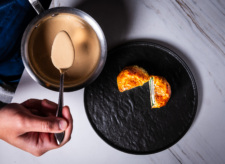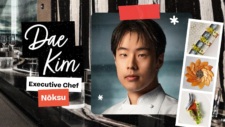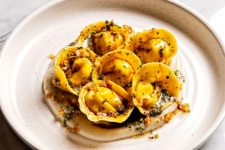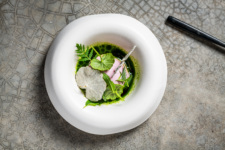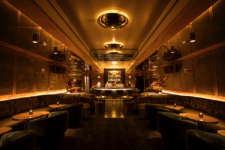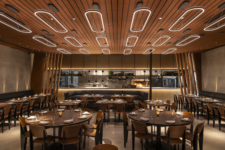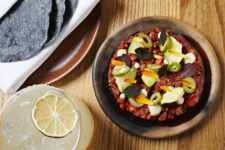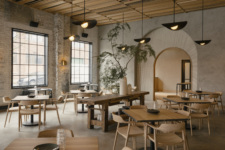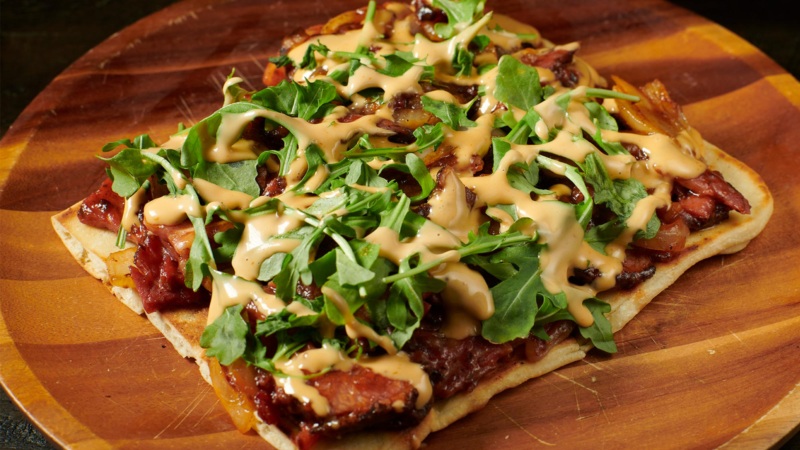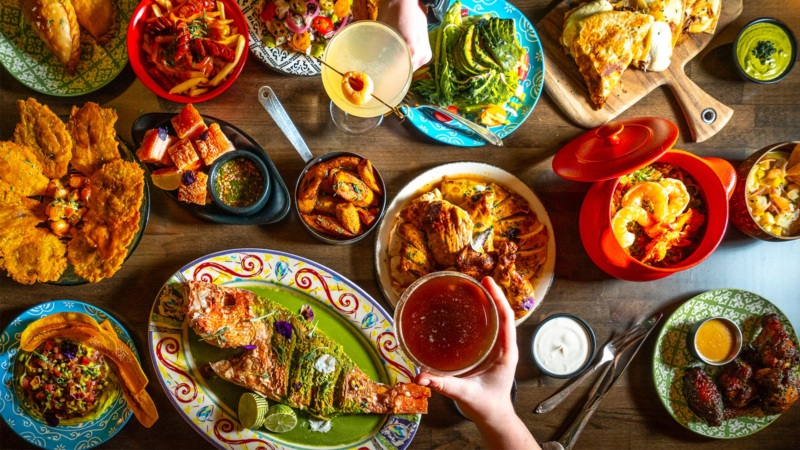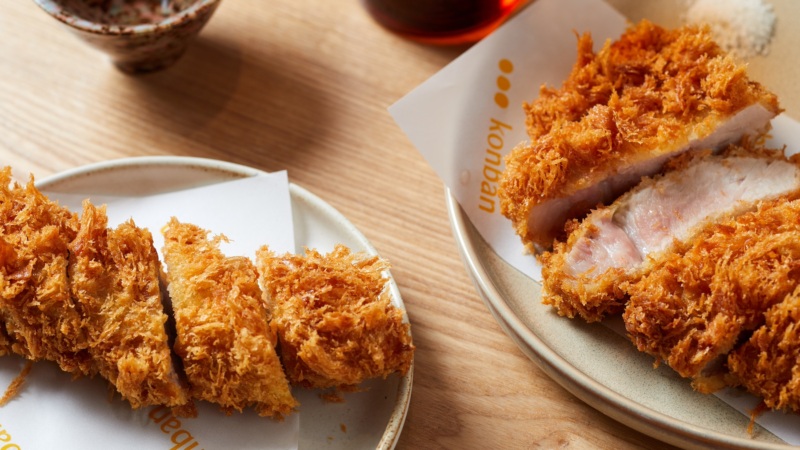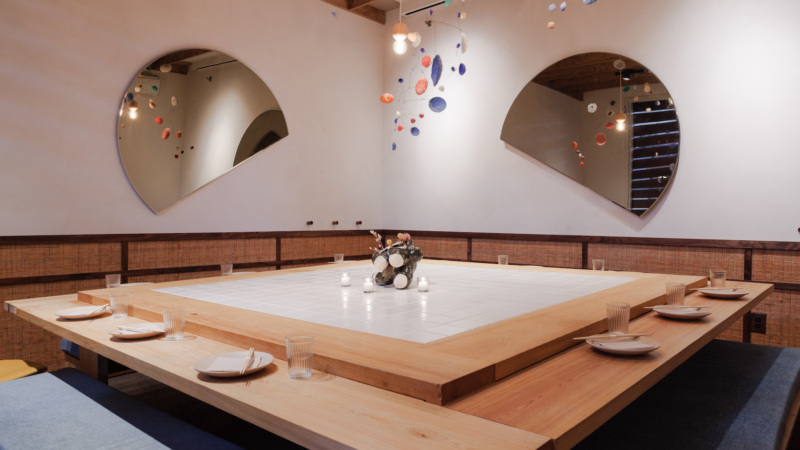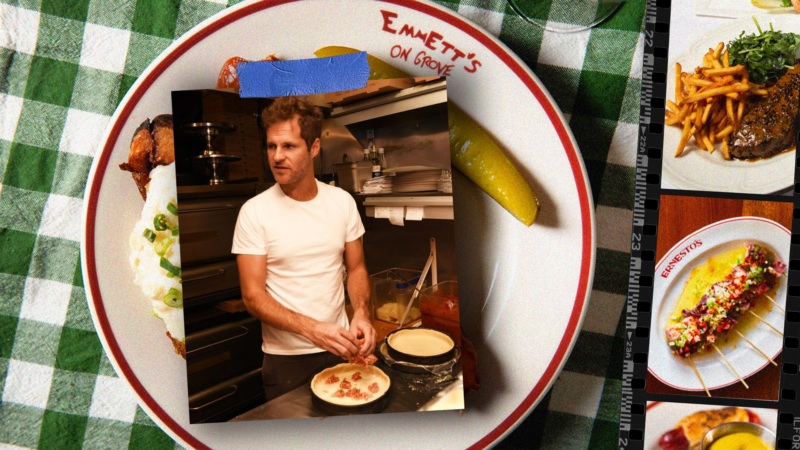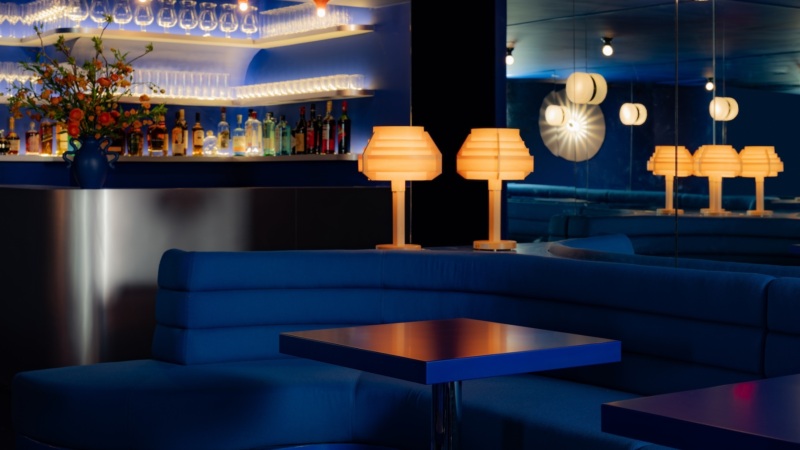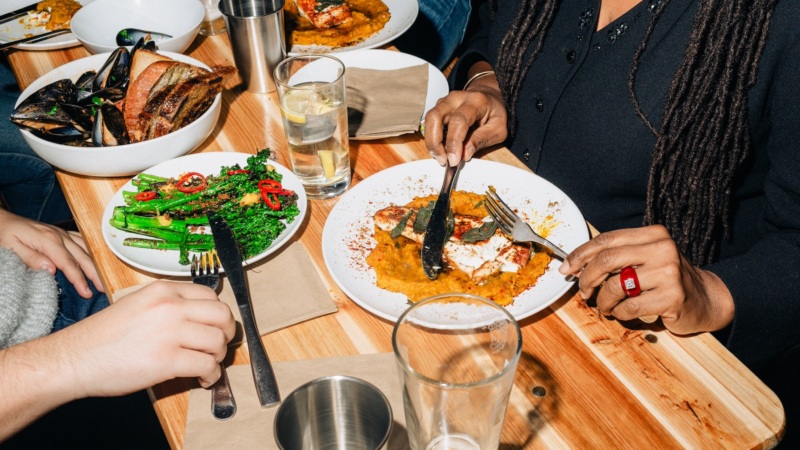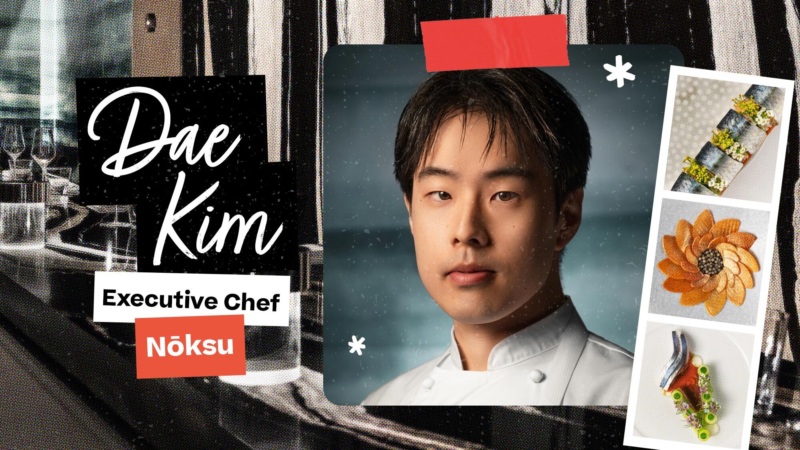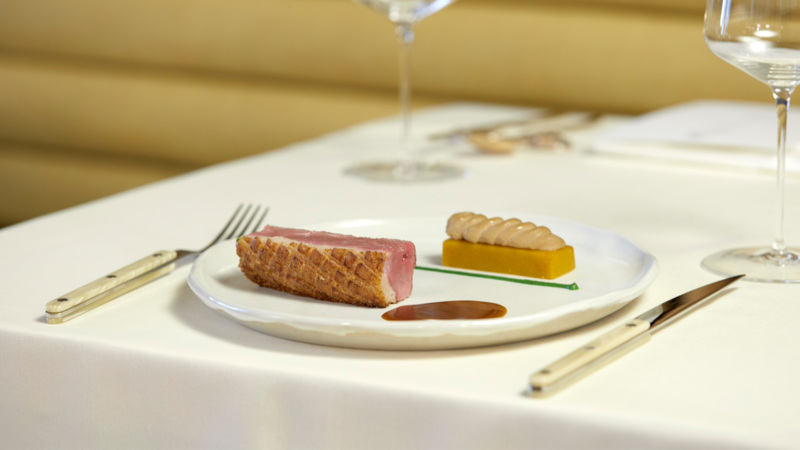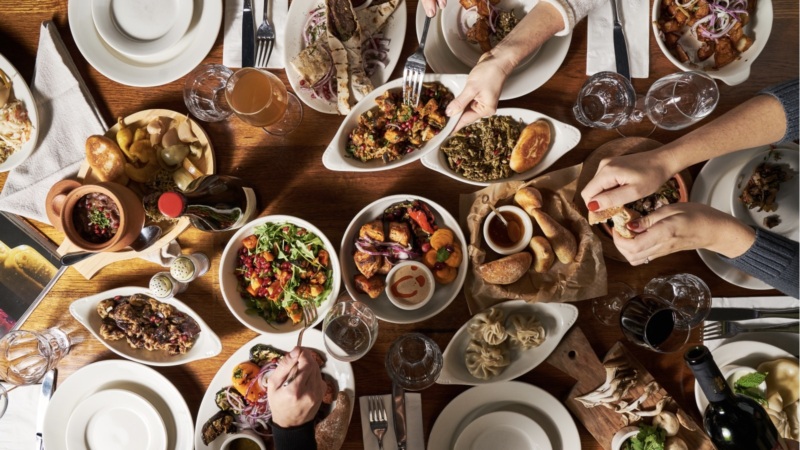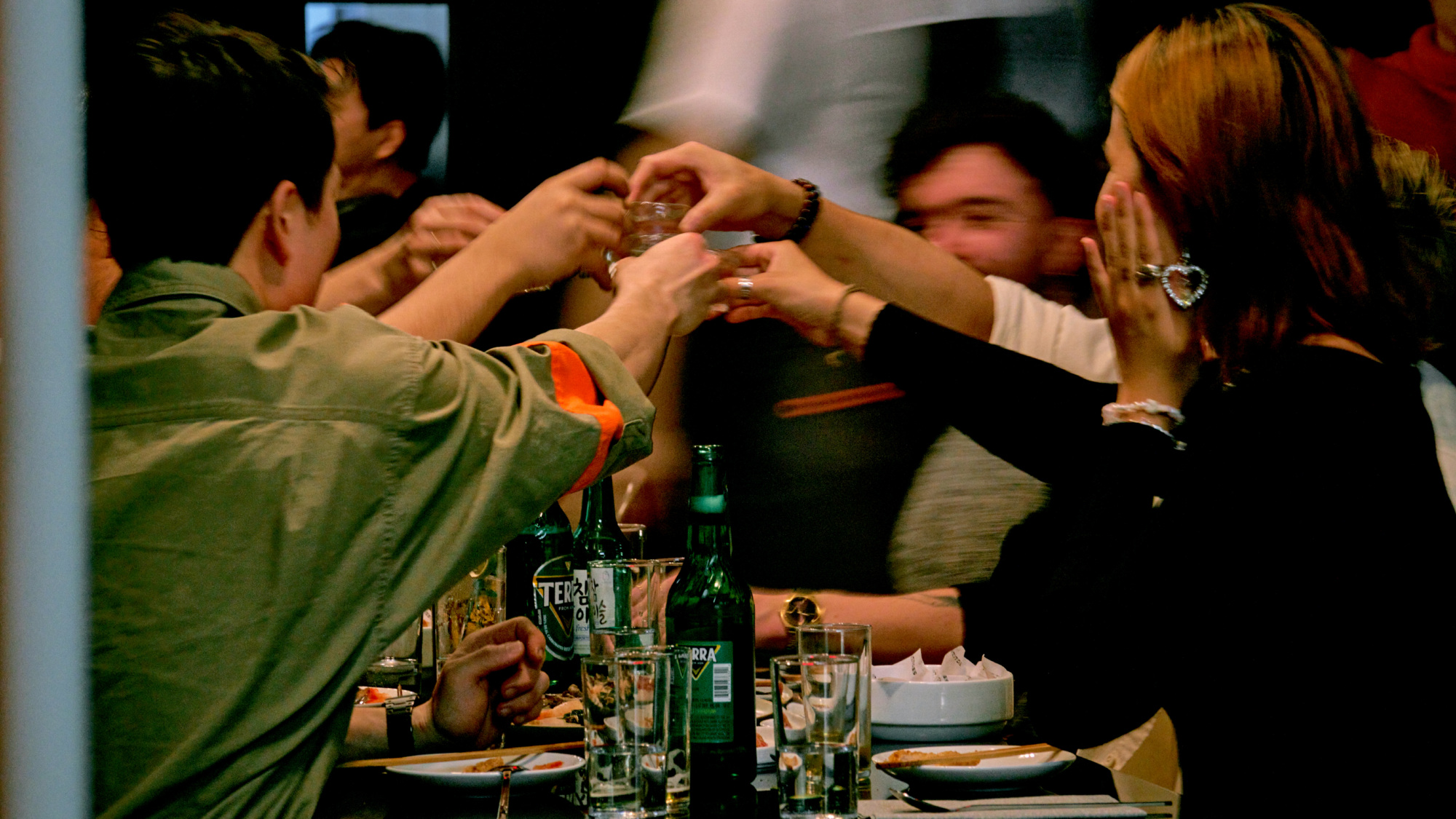
Seoul Salon Aims to Turn Us All On to the Korean Way of Drinking
In Korean culture, when someone says, “let’s get drinks together,” there’s often much more at stake than just a drink. Ellia Park, co-founder (along with husband and executive chef Junghyun Park) and CEO of Na:Eun Hospitality points this out to me. For one thing, social drinking plays a sizable role in Korean society. Most likely, an invite for drinks cues a desire to get to know someone on an deeper level. Drinks imply that an important discussion may be in order, or perhaps, that a confession of some sort is looming.
The most appropriate venue for such engagements, Park says, is the sool jib.
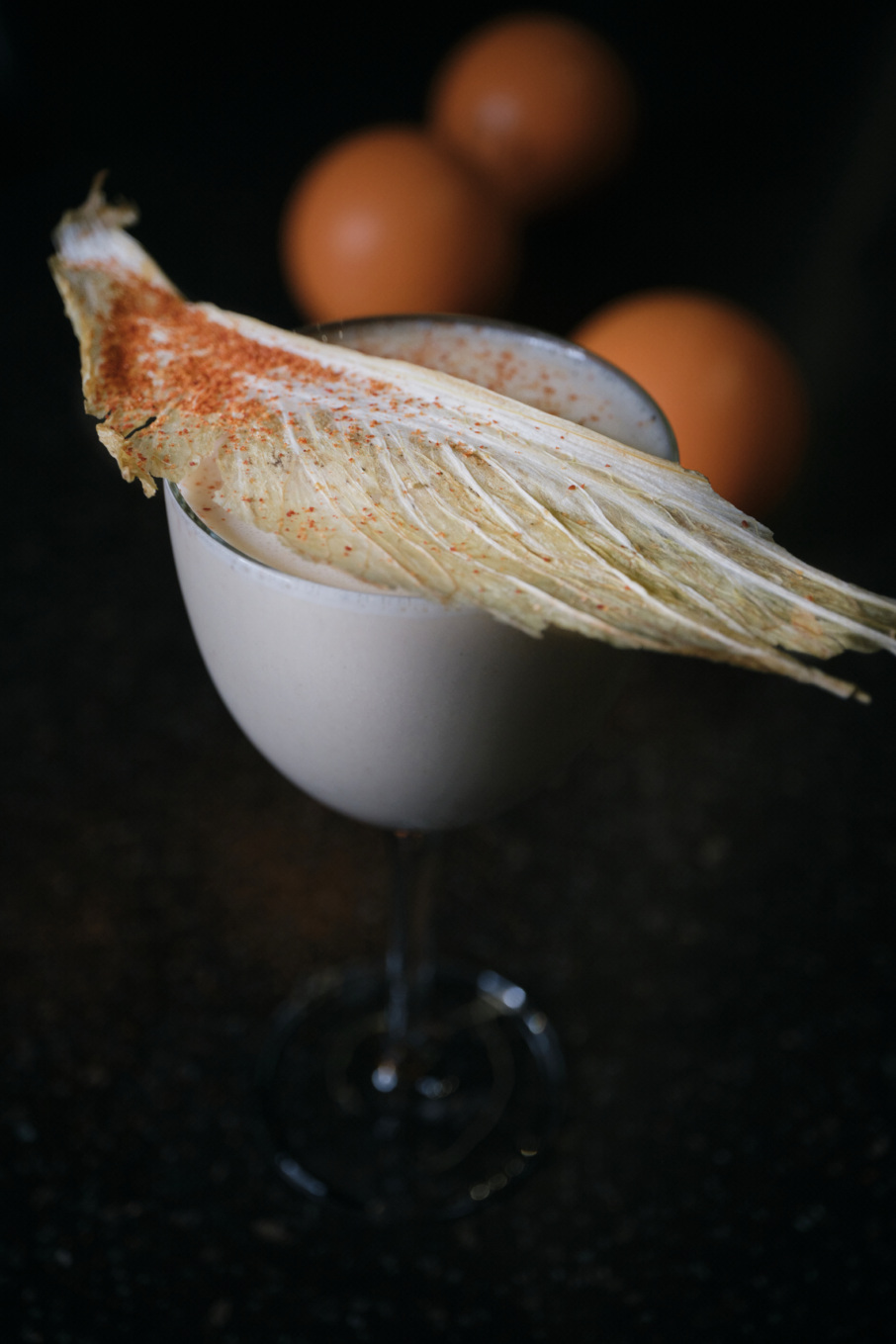
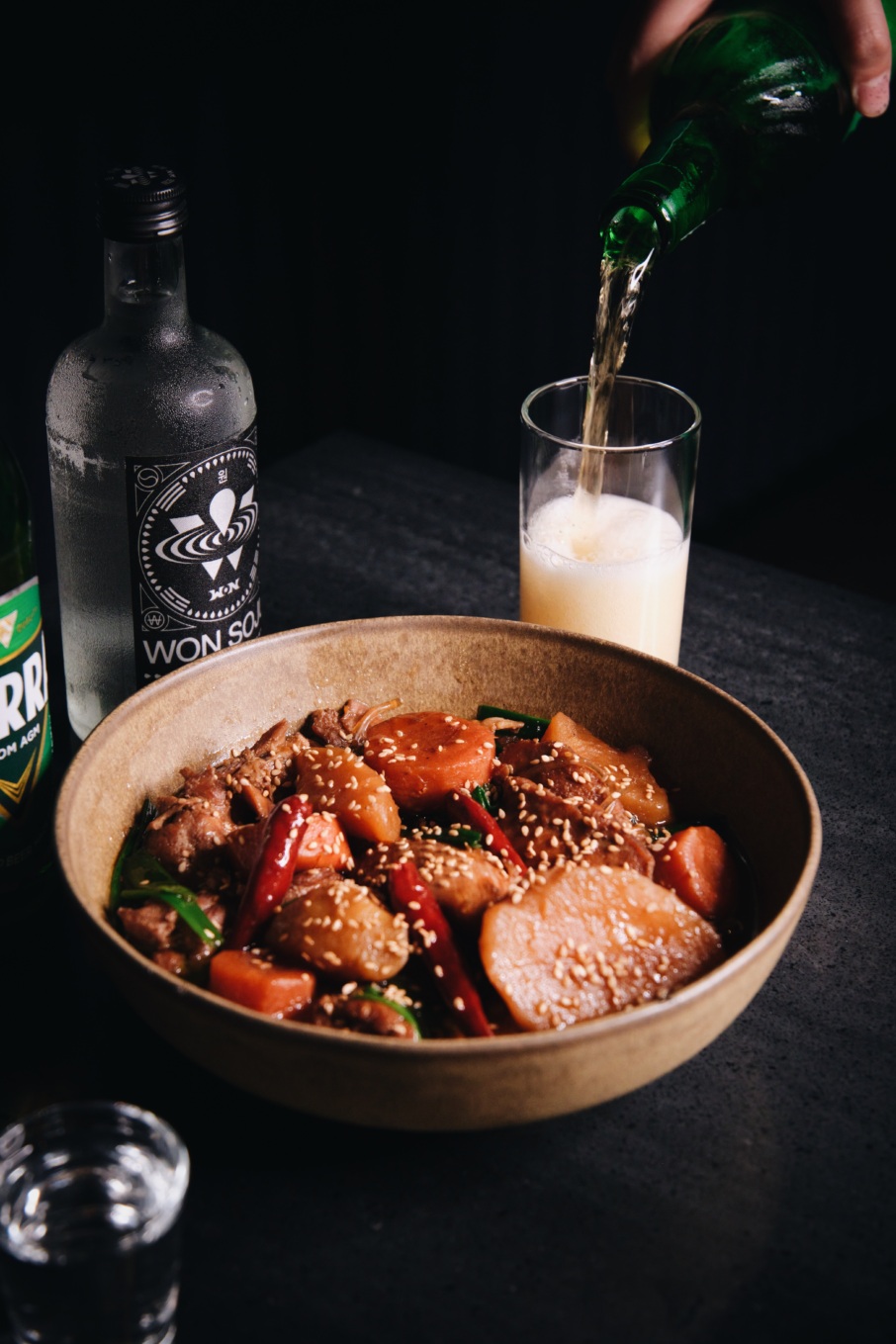
Sool jib translates literally into a place to drink sool — traditional Korean alcohol like soju — typically alongside anju, Korean drinking foods. Seoul Salon, the Parks’ latest restaurant in collaboration with Hand Hospitality, is their reimagination of the Korean sool jib — against the backdrop of New York City.
But more than just a drinking spot, says Junghyun Park (often known as J.P.), a sool jib is a particular sort of social space. “It’s all about communication,” he says. “It’s where people go to develop new ideas or debate about politics or working culture.”
Of course, as any New Yorker with even a passing interest in dining can attest, the Parks aren’t exactly just any bar owners. The couple has spent the last decade weaving elements of Korean food and beverage culture into the center of the tapestry of New York City dining. Their debut restaurant, Atoboy, turned the familiar concept of Korean banchan, or side dishes, on its head — evolving them into an exquisite prix-fixe experience. Atomix, their fine-dining destination just a few blocks away, racked up two Michelin stars — and a recent James Beard award — with its spotlight on techniques in Korean cooking, interpreted through the narrative of a 10-course tasting menu. Their latest fine-dining concept, Naro, located in Rockefeller Center, has been lauded as an homage to the history and development of Hansik, traditional Korean cuisine.
“Each restaurant is a different concept, a different aspect of Korean culture,” says Ellia. “But they all fall under the umbrella of new Korean culture,” she says, “and it’s our goal to bring that to New York.”
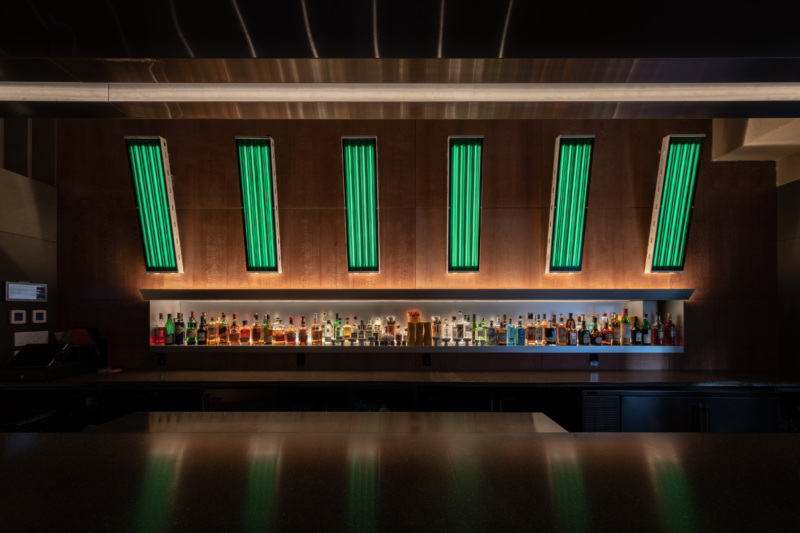

And now their gaze is on the sool jib — which, to be fair, aren’t new to New York City. “They’ve existed in K-town for quite a while,” says J.P. But unlike Japanese izakaya that have increasingly integrated into mainstream American culture, sool jib in America tend to be popular only among groups of Korean Americans or other Asians, particularly college students, he explains. With Seoul Salon, “we hope to provide that kind of cultural space to a wider range of American people,” says Ellia.
Located at the northern edge of Koreatown in a large, industrial space lit up with neon signs “inspired by the streets of Seoul,” says J.P., Seoul Salon is a bustling, trendy departure from the serene elegance of the Parks’ other restaurants.
“Seoul Salon is meant to be young and loud and fun,” he explains. The dining room, a stark configuration of concrete and stainless steel, still maintains a semblance to Starry Night, the Korean bar and karaoke joint that occupied it previously. There are no staff uniforms at Seoul Salon, so servers and managers alike work the floor in the kind of eclectic street style you might see in Hongdae or Gangnam. A mix of American and Korean hip-hop — queued up by AOMG, the Korean hip-hop and R&B record label — plays cheerfully in the background.
It’s a sceney spot that might be interpreted as an attempt at an “elevated” sool jib — something sanitized and polished for an upmarket, mainstream American clientele. But that’s not at all what Seoul Salon is. Rather, Seoul Salon represents the Parks’ deeply personal narrative on how to drink like a Korean. Straightforward stuff, really: beer, soju and some darn tasty nibbles. Except everything is painted in a swathe of shimmering, technicolor brushstrokes as only the Parks can do.
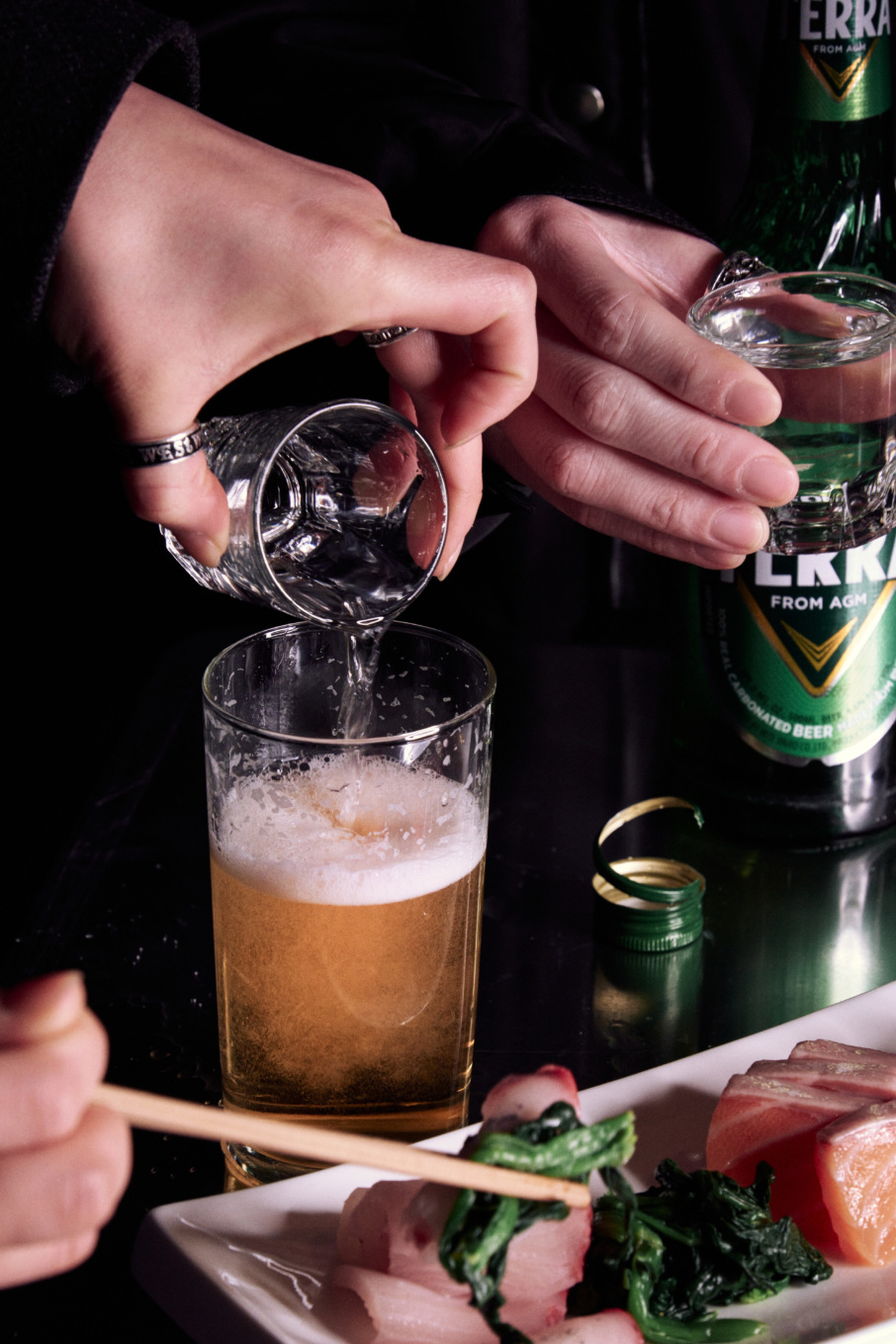

Why the Drinks Matter
One of the hallmarks of the Parks’ restaurants, whether Atoboy, Atomix, or Naro, has been a series of surprisingly avant-garde wine programs, which remain key attractions for regular guests. In keeping with the sool jib experience, however, Seoul Salon serves no wine. It focuses instead on a small repertoire of original cocktails and a bare-bones selection of soju and Korean beer.
Conceptually, everything starts with sool, says head chef Byeongsoo Yu. In designing the menu, “we focused first on soju. We made a food menu to be enjoyed with soju. And then cocktails were designed around the food.”
In keeping with a classic sool jib vibe, Seoul Salon doesn’t shy from its fondness for “green-bottle soju” brands — inexpensive, easy-drinking, commercial soju brands like Jinro, Chamisul, and Hallasan, found in any Korean establishment around the world.
Soju doesn’t have the same recognition as Tequila, mezcal, or sake, at least not in New York City, explains J.P. So “we wanted to start step-by-step, introducing just a few types of sool first,” he explains, letting guests immerse fully in sool-jib culture — things like green bottle soju and somaek [the equally ubiquitous DIY cocktails of soju and beer] iconic to Korea’s past and present, before introducing more artisanal products that represent the new generation in Korea. Eventually, the couple plan to introduce more offerings like Won soju, currently the menu’s only craft soju offering, a single-region rice soju made entirely from Wonju rice and matured in traditional earthenware pots.
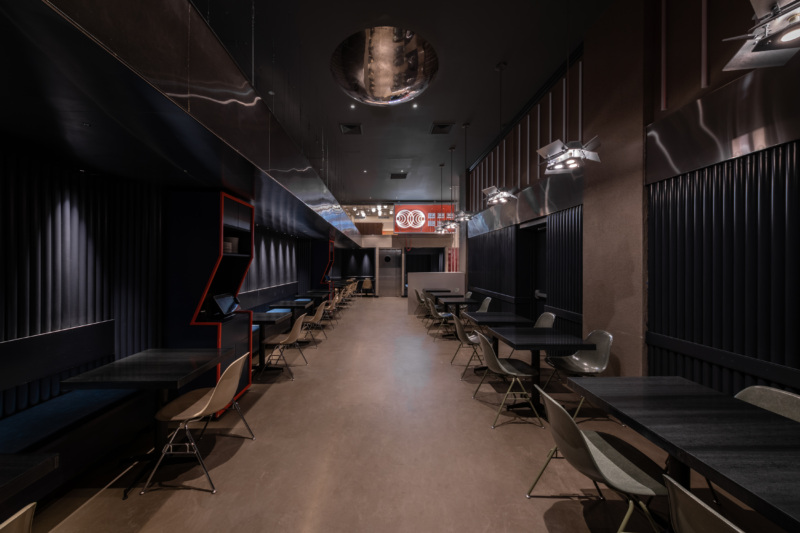

True to form, nearly everyone drinks soju at Seoul Salon. But the heavy hitters of the beverage program are the cocktails. The bar menu highlights a set of cocktails created for Seoul Salon by mixologist Byung-jim Lim of Bar Cham, the Korean cocktail bar featured regularly on Asia’s 50 Best Bars list. Visually dramatic and painstakingly detailed, they’re textured, impeccably balanced drinks that highlight Korean spirits with pops of distinctly Korean flavors. Goguma Kimchi combines Irish whiskey with goguma, or Korean sweet potato, and kimchi brine in a delicately lactic sip that’s enriched with pine nuts, milk, and yogurt. The Newtro Negroni is a new-but-retro take on the Negroni, with a base of rice soju, not gin, combined with the nutty, subtly sweet flavors of Solomon’s Seal root and toasted buckwheat.
In the dining room, a second set of cocktails designed by lead bartender Songrae Choi was developed specifically to harmonize with the more robust food offerings of the dining menu. Alongside flavors of kimchi, gochujang, or soy sauce, cocktails can’t be too delicate, explains Choi. “Korean food has a lot of umami,” Choi says, “so we use accents of soy sauce, doenjang (fermented soybean paste), or mirin to give our cocktails the umami to balance.” A rice martini, inspired by the traditional dry martini, combines rice soju infused with sesame seeds with rice vodka infused with nurungji, the thin layer of scorched rice that often forms at the bottom of a rice pot. Delicately smoky and sweetened with mirin, it’s palate cleansing while having the richness to stand up to food.
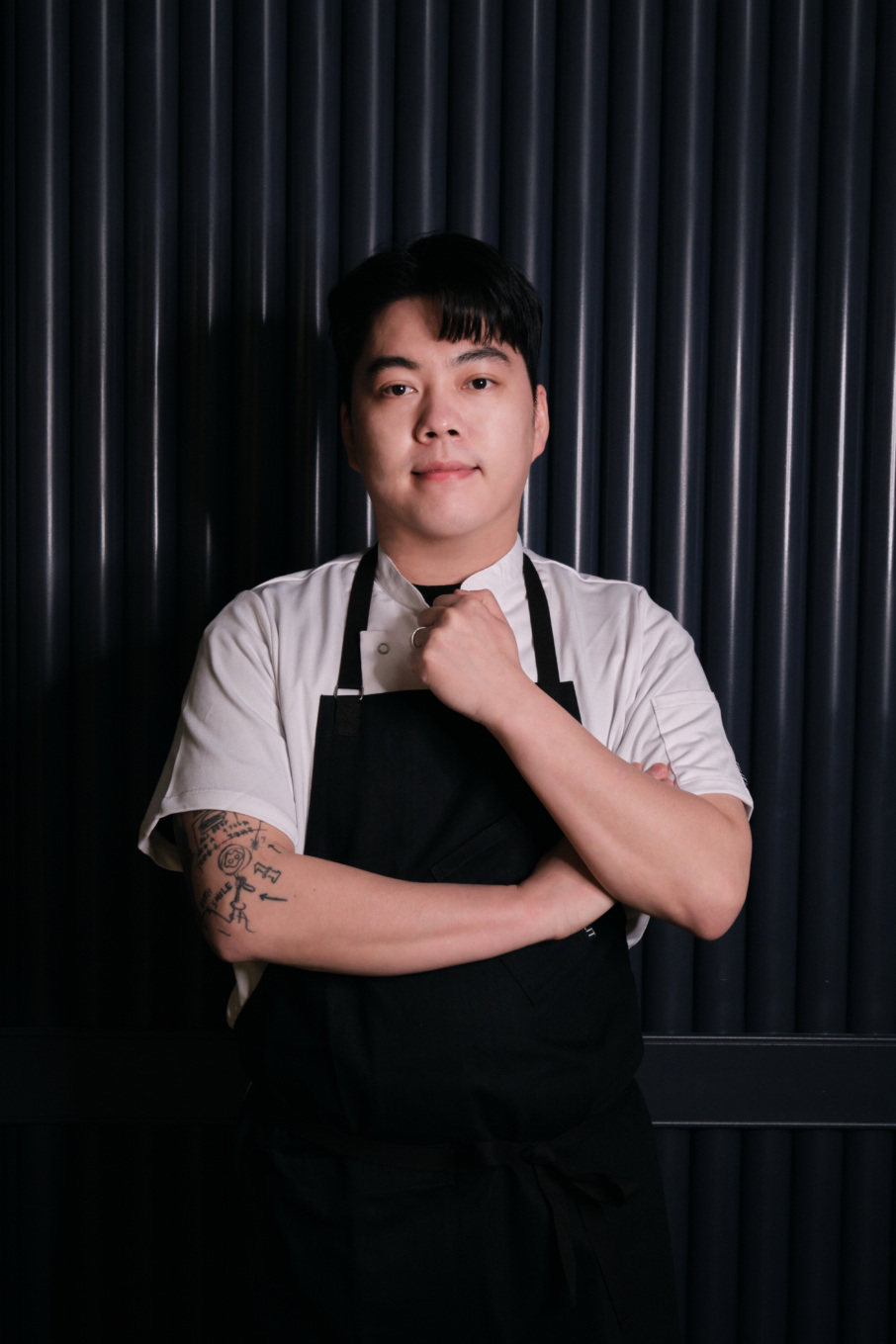
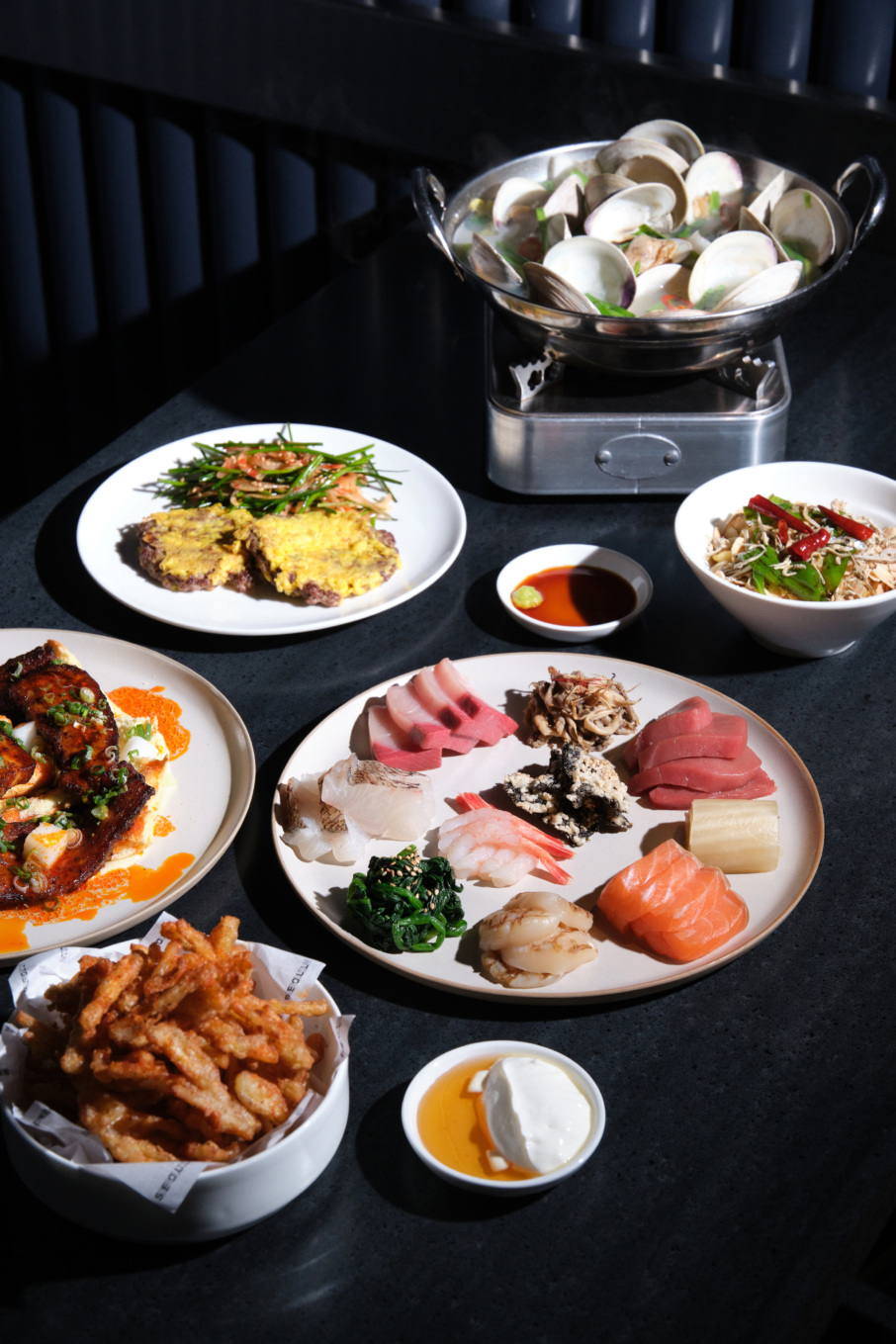
Why the Food Matters
Classic Korean anju feature heavily on Seoul Salon’s menu. “Most of our dishes are straightforward Korean dishes,” says general manager Hoon Kim. Diners might start the night with hoe, or Korean raw fish, followed by small plates of samgyeopsal (pork belly) and squid muchim (a spicy seaweed salad). A rice dish, soup, or spicy ramyeon typically closes the meal.
Indeed, “straightforward” is a word heard frequently when servers at Seoul Salon describe dishes. The clam soup, for example, a steel pot of littlenecks steamed in dashi with tofu, cabbage, and Korean radish, is the kind of homey Korean dish that J.P. says his parents would identify as traditionally Korean.
“But there’s always a twist,” admits Kim. “We always use impeccable ingredients and there’s always a bit of technique to make it a little more modern or a little bit more trendy.” Accordingly, the clam soup is surprisingly piquant with white pepper. And while radishes play second billing to clams on the menu, they’re steeped with so much dashi goodness, they’re as flavorful as any meat or fish on the menu.
They are, indeed, straightforward dishes, simple at heart but brilliantly and often playfully executed.
Yu’s crispy anchovy pasta was inspired by a dish his mother makes — myeolchibokkeum (stir-fried dried anchovies) with shishito peppers. Yu, who worked in an Italian restaurant before joining Seoul Salon, reimagined the dish as “pasta in the Italian way, sauteed with olive oil and anchovy paste, but with myeolchibokkeum as a Korean garnish.”
Indeed, a closer look at the menu reveals it as a whimsical mix of the old with the new, and an absorption of global flavors into Korean food culture, which also reflects how people eat today in Seoul, Kim explains. “Seoul is the most trend-sensitive city in the world,” he says.


At the same time, some of the most memorable dishes at Seoul Salon are its most deceptively simple. Yukhoe, a Korean beef tartare of chopped lean beef, is dressed delicately with just sesame oil, salt, and black pepper. While typically served with slices of Asian pear, at Seoul Salon the meat is placed over a delicate sauce of pureed pears and garnished with charred enoki mushrooms and geotjeori, or fresh kimchi made from crunchy cabbage stems. The cucumber with mushroom XO highlights crunchy discs of raw cucumber, dressed with shiitake mushrooms in an umami-dense housemade XO sauce, and topped with crunchy bits of toasted buckwheat.
They are, indeed, straightforward dishes, simple at heart but brilliantly and often playfully executed. After all, Seoul Salon is proudly, enthusiastically, “just” a sool jib — a place where sool and the raucous culture of Korean drinking culture is proudly at the forefront. Or at least, that’s how the Parks view it.
Anna Lee C. Iijima is a Japanese and American journalist and wine critic. She’s a regional editor for The New Wine Review, and writes frequently for the Decanter, Chicago Tribune and other publications. In a previous life she was a corporate lawyer. Follow her on Instagram. Follow Resy, too.









